#javanese style
Text
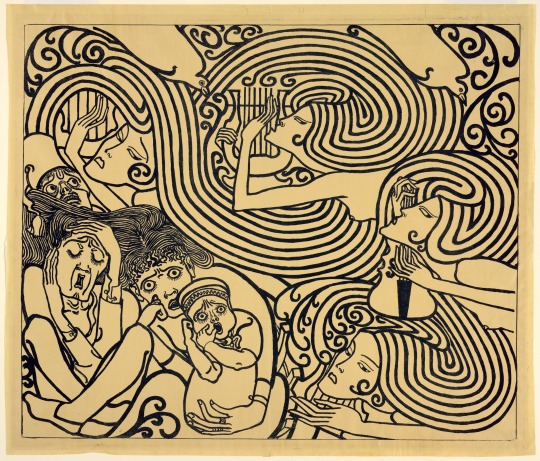
Jan Toorop ~ Image Design for a Poster. Johan Wagenaar's Cantata 'The Shipwreck', 1899 | src AIC
link zu De Schipbreuk >>> youtube
view& read more on wordPress
#jan toorop#1890s#Dutch artist#art nouveau#jugendstil#Dutch art nouveau#Javanese artist#slaoliestijl#salad oil style#shipwreck#wagenaar#sinuous#curvilinear#poster design#Johan Wagenaar#Schipbreuk#Humoristische Cantate#Cantate#Cantata#De Schipbreuk
122 notes
·
View notes
Text



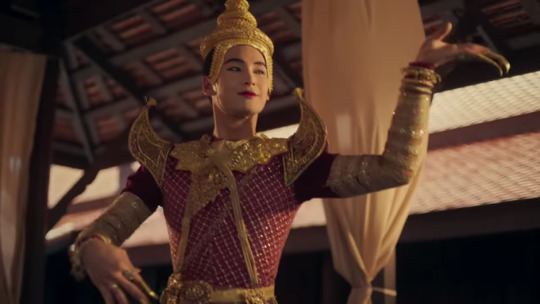




In the first teaser trailer that be on cloud filmed, you can see Khem wearing the traditional Inao costume.
The one he wears in Man Suang is a much more modern interpretation although it still stays very true to the traditional aesthetic.
Wan is also wearing a very traditional Inao costume with the distinctive flat, rounded headdress which is to evoke a Javanese style, to hark back to Inao (Panji's) roots.
#man suang#before it was even called man suang#apo nattawin#mile phakphum#bas asavapatr#chatkhem#lakhon nai#the romance of inao#thai dance#thai film
53 notes
·
View notes
Text
@transgenderer to expand on the stylisation thing w/o reblogging the entire reply chain:
art theory lacks a specific term for the kind of stylisation you're referring to here bc it's precisely the terminology of style that usually covers what you recognise as stylisation-without-abstraction. everything from mannerist paintings to javanese leather puppets technically falls under the definition of figurative art, and it's (implicitly) the manner in which they depart from naturalism that allows for the definition of separate styles—whence the usage of 'stylisation' to mean decorative generalisation, even though naturalism is itself an 'art style'
there's also the distinction between deliberate generalisation and generalisation that emerges due to ignorance and/or medium constraints. romanesque sculpture is 'stylised', deliberately to the extent mediaeval artists consciously chose which body parts/figures/what-have-you to emphasise, yet it clearly strived toward a naturalist standard without ever quite getting it right (unlike the consciously generalising styles of the early middle ages, like the animal style). i think this also probably applies to javanese puppets, but not to (for example) the mesoamerican codexes or ancient egyptian art, both of whom seem to have been deliberately 'stylised'—and then there's the fact what originally began as unintentional generalisation (for the lack of a better term) often becomes deliberate, decorative generalisation once the original template is emulated by later artists...
obv the biggest problem with this definition of 'stylisation' is that it (still) compares figurative art against an imaginary natural standard, which is untenable both because what constitutes a 'natural standard' is subjective (the pseudo-classicising naturalism of romanesque is no photorealism!) and because it leaves little space for deliberate generalisation. if i had to propose a term for non-abstracted, non-naturalist figurative art, it would probably be 'generalising figurativism' or 'template figurativism'. 'reductive figurativism' could probably also work, though the etymology might be a little opaque—the idea is that an object is being reduced to an agreed-upon template. take ur pick!
13 notes
·
View notes
Text

Jesus depiction as a prince in Java, Indonesia

Javanese Jesus

The Virgin Mary and Child also depicted in Hindu-Buddhist style
14 notes
·
View notes
Text

Another character designed! Her appearances were inspired by Charlotte Martin and some features on her face are from 1920s standards and the Biba style of the 1970s, I haven't given her a name yet but I probably a Javanese or Tagalog!
#digital art#my art#digital illustration#1960s#1970s#character design#original character#60s#she’s a witch???
13 notes
·
View notes
Text
BLOGTOBER 10/13-14/2023: THIRTEEN WOMEN, SVENGALI

I really loved this. I wonder what the book is like, I might have to read it! Author Tiffany Thayer sounds like a pretty interesting guy as per this collection of provocative reviews on Wikipedia:

I don't know about you, but that makes me want to read everything he wrote. THIRTEEN WOMEN concerns a circle of grownup sorority sisters who are beset by an anomalous series of murders and suicides. It so happens that all of the women recently received damning horoscopes in the mail from a self-styled New York Swami--but the Swami himself is just a pawn in a greater conspiracy masterminded by Ursula Georgi (Myrna Loy). The master hypnotist has a bone to pick with these smug society ladies, which I am about to spoil so plug your ears if you'd rather watch the movie first (and you should! It's only an hour long): As a half-Javanese girl "saved" by a missionary who sent her to a western finishing school, Ursula believed the key to her future was to pass for white. Therefore, she's vowed revenge on the racist sorority that rejected her in college, and honestly the revenge she has plotted should have earned her an honorary PhD. It's hard to imagine that either a 1930 novel or a 1932 movie really mean to say "fuck racism" so frankly, but the sharp premise and Myrna Loy's incredible charisma make it hard not to side with the ostensible villain in this picture.

Some people have remarked that THIRTEEN WOMEN is an early iteration of the slasher movie, with its female ensemble (of sorority babes no less) being picked off one by one. To me it was more reminiscent of the cursed media motif familiar to J-horror. Maybe I'm just saying this because I rewatched RINGU this Blogtober and I was encouraged by the documentarians behind THE J-HORROR VIRUS to consider its influence on SMILE, which I also rewatched, and which I'm realizing I love. The victims in THIRTEEN WOMEN have signed a round robin chain letter, for which they each receive a star chart describing their imminent doom; the power of suggestion takes the place of power tools here, with Ursula's sheer force of will acting as a free-floating contagion that rots the guilty and weak from the inside out. I was reminded of movies like RINGU and JU-ON as much as of Jorg Buttgereit's DER TODESKING, an experimental horror film about a chain letter that causes its recipients to self-destruct. It's fun to think that THIRTEEN WOMEN is a progenitor of movies like BLACK CHRISTMAS, but I see reflections of it elsewhere, too.

I wound up pairing this with SVENGALI just because they're both hypnosis movies, but that movie turned out to have its own racial tensions. In George du Maurier's foundational 1894 novel Trilby, the evil hypnotist is explicitly Jewish; in Archie Mayo's 1931 adaptation, Svengali is referred to abstractly as "Polish or something", which seems to be a euphemism for a Semitic Eastern European identity. This might not invite such analysis if it weren't for the styling of John Barrymore as a swarthy, rodent-like embodiment of greed. When I say that, it sounds pretty negative, but I'd still insist that SVENGALI is a great movie well worth seeing for its perverse humor, surprising grimness, expressionistic design (courtesy Anton Grot), and unusual horror elements--in addition to Barrymore's unforgettable performance.

I guess there has been some debate over whether SVENGALI is properly a horror movie, and I refer you to author Tony Burgess who once said that if you have to argue about whether or not something is a horror movie, then it's probably a horror movie. The only causes to argue are if you insist on an extremely narrow definition of horror to guide your personal consumer habits, or if you're squeamish about admitting that you've ever enjoyed or respected anything that falls under the horror umbrella (and I tend to think the latter case is more prevalent). Admittedly, SVENGALI blends comedy, romance, and musical elements such that the viewer is never quite sure how dark things will get until the very end, but I think that anyone should be able to see the horror in the incredible sequence of the eponymous villain sending his disembodied consciousness through the CALIGARI-like city to possess the unwitting Trilby (played by Marian Marsh who must have been the most adorable person alive at the time). A few different visual effects are used to evoke Svengali's power, some of which are still modern-looking and scary, and the film's breezy humor and charm do not promise any particular safety.

On some level, the aura of antisemitism and xenophobia itself lets us know we're in horrific territory. This is the genre of fears, rational and irrational, where we face whatever society perceives as threatening. Today we're in the midst of a lot of arguments about whether or not "separating the art from the artist" is ever appropriate, with full cancellation of the art AND artist positioned as the only alternative, but both of these options suggest that we must never have to face immorality, ambiguity, or ambivalence in art at all; we're forced to either avoid it or ignore it. This denies us the opportunity to understand what these darker emotions consist of, and understanding is the only way to defang them. Personally, I don't think it's any more helpful to condemn e.g. Dracula or the Wicked Witch of the West for their bigoted elements, than it is to simply pretend those things aren't there at all. SVENGALI provides us with a similar opportunity to confront antisocial phobias, with its troublingly caricaturesque villain and the unavoidable fascination one feels when his hypnotic gaze projects itself at us from the screen. Recommended viewing.

#blogtober#2023#horror#thriller#slasher#adaptation#racism#thirteen women#george archainbaud#tiffany thayer#myrna loy#svengali#trilby#george du maurier#archie mayo#john barrymore#marian marsh#pre-code#anton grot
18 notes
·
View notes
Text

Neon in Kebaya to visit me and @thelovelyghostwriter in her trip to Southeast Asia (Indonesia, Singapore, Malaysia
The version of kebaya Neon is wearing is my favorite type (Kutubaru Kebaya), I always wear this type to semi-formal events.
Kebaya is officially recognised as the national attire of Indonesia,[10][15] and its fashion icon,[16] although it is more popularly worn by Javanese, Sundanese and Balinese people. In Malaysia, Singapore and Brunei, it is recognized as one of its ethnic attires especially among Malay and Peranakan communities;[n 3] the complete outfit is known in these region as "sarong kebaya".[6] The style of sarong kebaya vary from place to place throughout the region.
12 notes
·
View notes
Text
OKAY BUCKLE UP FOLKS IM GONNA MAKE ANOTHER “INDONESIAN PLAYS CORAL ISLAND AND DIES” POST
PARDON MY EXCITEMENT I NEVER FEEL SO ~REPRESENTED~ EVER AND I AM FOAMING IN THE MOUTH
note: some pictures does not belong to me, using it here for ~educational purposes~ only.
first of all if you go to the furniture shop, you’ll find some furniture theme sets. one of them is this Javanese Style set. this is explanatory, Javanese means well Javanese. Indonesia have so many MANY sub-ethnic and cultures, and Java is one of them.

so this theme is javanese culture stuff which i found very very cute. I had to buy this man and woman statue because its kind of a popular thing you can find in traditional souvenir shops and I always love the style of it.


there are other stuff there too like Keris and Saron ( a part of Gamelan Set)


alright into the next thing, this theme set is called “kosan style”.

its hard to explain what Kosan is to outsiders but basically its like you are renting a room in a house to live there temporarily, either its because you work/study faraway from your home or you are moving to another city. so basically its a temporary living quarter that you pay monthly. usually the item you have in a kosan room is “cheap and easy to carry” stuff just like the items in this set (mostly made out of colorful plastics). here are some examples.

for pumping large mineral water bottles

for your shoes/sandals

last but not least this iconic plastic chair.
alright sorry for the long post, I’m gonna keep making these kind of posts if I found more “oh so indonesian” stuff in the game.
107 notes
·
View notes
Photo

A pair of javanese hindu-buddhist style bracelets, gold
75 notes
·
View notes
Text

good luck | By Nevi Ayu E.
So, I decided to play more with Aksara Jawa (Javanese Script) this year! Even though I think I might make a spelling mistake one day, lol, but I get to try out and explore different styles of types and graphic. And this is my first Aksara Jawa typoster this year: Good Luck (gut-lak) written in a cute handwritten style with hearts on the sides.




#poster design#poster art#typography poster#typography design#typeface design#aksara jawa#javanese script#good luck#tipografia#aksara jawa typography#posters
4 notes
·
View notes
Text
Jan Toorop · The Salad Oil style
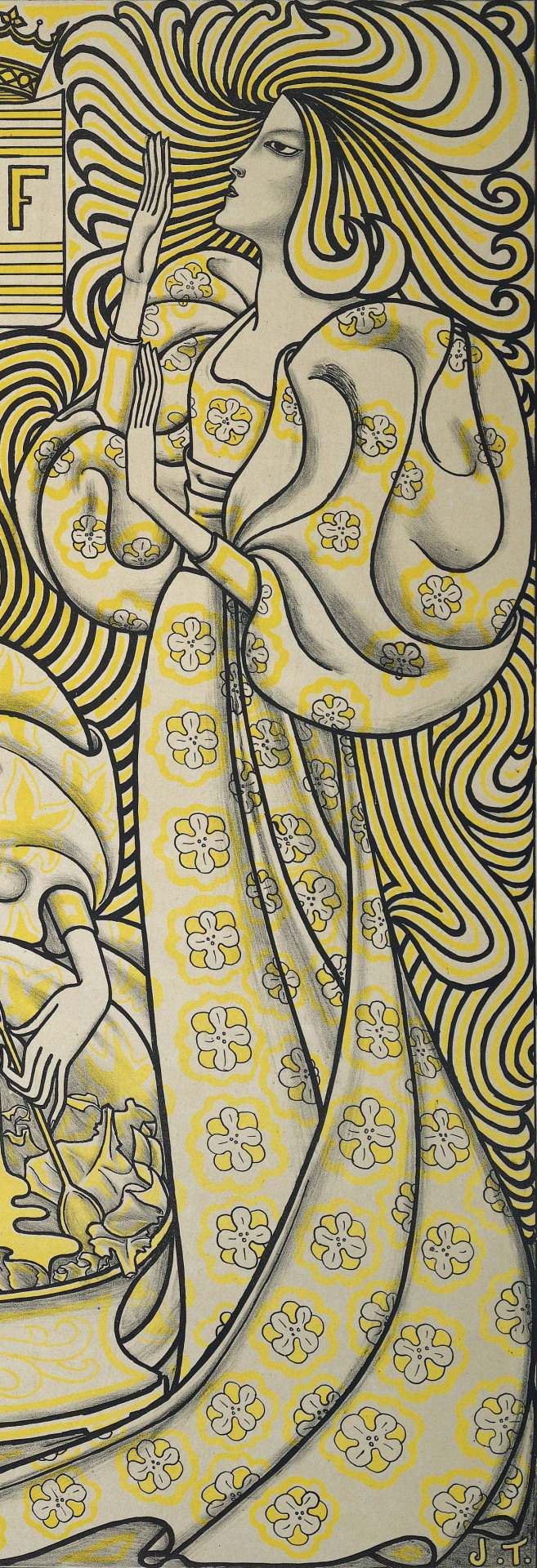
Jan Toorop ~ Poster for Delft Salad Oil, 1894 (RP-P-1912-2395) | src Rijksmuseum (detail)
view & read more on wordPress
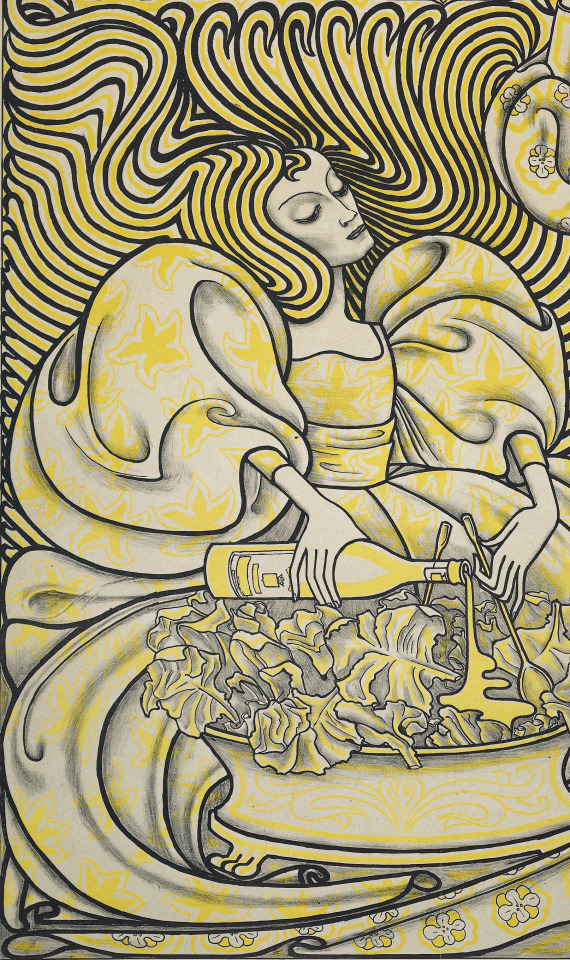
Affiche Delftsche Slaolie (1894) This poster was commissioned by the Nederlandsche Oliefabriek, an oil manufacturer in Delft. Two women with wavy hair and billowing draperies occupy most of the composition. >>> continue reading on wordPress

view & read more on wordPress
#Jan Toorop#advert#jugendstil#art nouveau#curvilinear#design#Dutch Art Nouveau#dutch artist#Javanese artist#poster design#1890s#Johannes Theodorus Toorop#ad#rijksmuseum#advertisement#salad oil#salad oil style#sinuous#advertising#slaoliestijl#wavy
46 notes
·
View notes
Photo

Hartland Estate, a luxurious tropical home in Ubud, Indonesia by Studio Jencquel @studio_jencquel + Yew Kuan Cheong Read more: Link in bio! Photography: Pempki @pempki, Djuna Ivereigh @djunapix. Studio Jencquel: Hartland is a private estate, nestled into the slopes of Ubud’s scenic Sayan Ridge. Overlooking a wide tapestry of rice paddies bordering the Ayung River, the domain extends over approximately 6,200 square meters. Together with architect Yew Kuan Cheong, Maximilian Jencquel designed a luxurious tropical home. Both Linda Garland’s vernacular style and Axel Vervoordt’s “Wabi” spirit are part of the initial inspiration. The site plan is loose and organic, with 5 bungalows blending seamlessly into the surrounding scenery. The primary building components for this project were reclaimed Javanese houses… #bali #lodge #indonesia #архитектура www.amazingarchitecture.com ✔ A collection of the best contemporary architecture to inspire you. #design #architecture #amazingarchitecture #architect #arquitectura #luxury #realestate #life #cute #architettura #interiordesign #photooftheday #love #travel #construction #furniture #instagood #fashion #beautiful #archilovers #home #house #amazing #picoftheday #architecturephotography #معماری (at Ubud, Bali, Indonesia) https://www.instagram.com/p/CiA6qZ7rI0M/?igshid=NGJjMDIxMWI=
#bali#lodge#indonesia#архитектура#design#architecture#amazingarchitecture#architect#arquitectura#luxury#realestate#life#cute#architettura#interiordesign#photooftheday#love#travel#construction#furniture#instagood#fashion#beautiful#archilovers#home#house#amazing#picoftheday#architecturephotography#معماری
84 notes
·
View notes
Text
BE ON CLOUD NEW PROJECT – CULTURAL DETAILS BEHIND THE MILEAPO MOVIE TEASER

There is an interesting reaction video posted by ATHCHANNEL on YouTube (video linked here: REACTION + RECAP | Be On Cloud | New Project & Things You Missed) about the MileApo movie teaser-trailer (teaser linked here: Be On Cloud | New Project).
ATHCHANNEL's video was originally posted without subtitles. But they've now added subtitles in many different languages, and it's a fascinating watch.
In the video, host P'Ham reveals some Thai cultural details underpinning the teaser.

Here are some takeaways:
The performance appears to be a traditional Thai lakhon nai – dance dramas that were staged only behind palace walls for the king and his family.
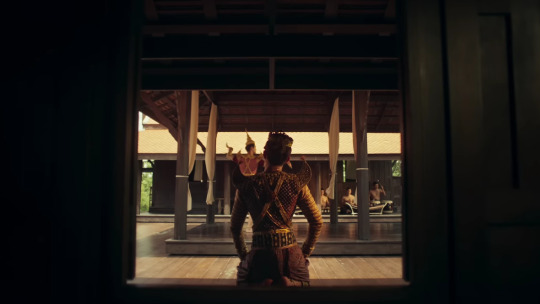
Until the reign of Rama IV and V (1851 to 1910), only women were allowed to perform in lakhon nai. (This was because male outsiders were not allowed to enter the royal court.) As the king was seen as a reincarnation of divinity, the female performers were also seen as akin to angels performing for the gods. Angels were believed to be white-skinned with arched eyebrows and red mouths, hence the use of face powder, black eye makeup and crimson cinnabar to stain the lips.
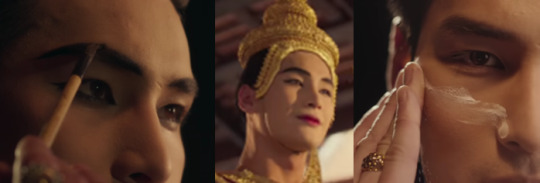
As the original performers were female, the style of dance evolved to emphasize fluidity and elegance rather than (more masculine-associated) strength and athleticism. This emphasis on refined lines continued even after male dancers were allowed to perform lakhon nai, sometime during the reign of Rama IV and V. (This is probably also why Apo's feline physicality – very much evident in KinnPorsche – makes his few seconds onscreen as a lakhon nai performer here so luminous and compelling. 😊)

The 6-piece musical ensemble that Mile appears in is known as a piphat khrueang ha, and it was used to accompany lakhon nai in the early part of the Rattanakosin period (1781 to 1932).
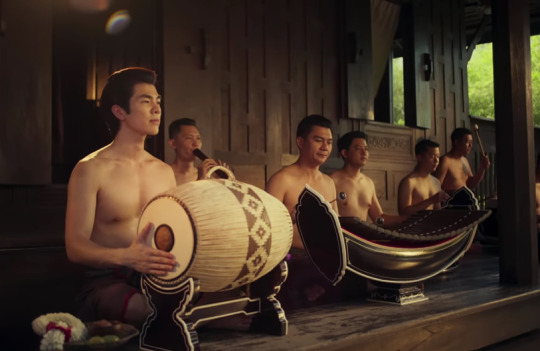
The drum that Mile plays is known as a taphon. He smears a paste on one side of the taphon – either cooked rice mixed with ashes, or dried ripe bananas, ground up – in order to modulate the sound (the more that is smeared on, the softer the drumbeat).
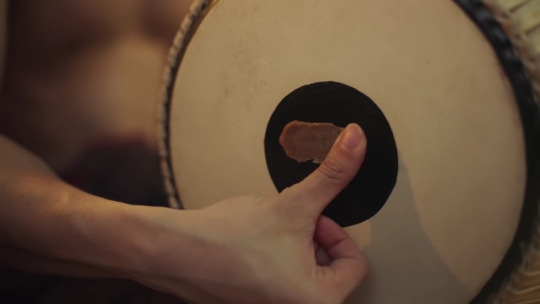
P'Ham believes that the epic being depicted here is Inao (the Thai version of Javanese Panji stories). This is primarily because of the headgear worn by Bas Asavapatr (he who played the charming and disarming Arm in KinnPorsche, seen here sporting a lot more gold and no glasses 😊).

The headdress on Bas, known as a panjuret, is stylized Javanese headgear, and was worn by the characters in Inao as the epic was set in Java.
P'Ham also informs us that one part of Inao the epic has a homoerotic subtext – the close (but otherwise consciously chaste) relationship between Inao and Sangkamarata, the beautiful brother of Inao's second wife. If Bas' character is playing Inao (given his panjuret), then Apo's character is likely portraying Sangkamarata (as his headgear signifies a main character). Therefore, what we're seeing is kind of a BL lakhon nai enacted to promote a BL movie. 😊
P'Ham goes on to mention one detail that is intriguing because of its absence – the uba or dangling floral ornament on the ear of the headdress. More than just decoration, the uba also functions to identify the gender of the character being portrayed. But neither Bas nor Apo is seen with an uba – given the rigorous adherence to traditional details everywhere else in this teaser-trailer, P'Ham sees this as a deliberate omission and a metatastic tip of the headgear to the idea of love without gender. 💖

#MileApo#Mile Phakphum#Apo Nattawin#Bas Asavapatr#Be On Cloud New Project#ATHCHANNEL#youtube#mileapo movie trailer#mileapo movie
76 notes
·
View notes
Text
Roleplaying Races 13: Wayang

We’ve seen all sorts of playable ancestries throughout our exploration of the system’s options. Few, however, can claim that they were inspired by a real-world art form! I present to you the wayang, those small shadowy creatures that hailed from the Plane of Shadow, and have a curious relationship with light and dark.
The word “wayang” in the real world refers to the Javanese cultural tradition of shadow puppetry, in which elaborate puppets are maneuvered behind a screen with a light source in a form of theater, complete with musical accompaniment. Oftentimes these shows revolve around Hindu myths and stories, and it’s easy to see how the slender limbs of these puppets, as well as their forward-facing necks, exaggerated features, and style of dress were the inspiration for the fantastical ancestry that shares their name.
For their part, the wayang in Pathfinder were denizens of the Shadow Plane that emigrated to the Material thousands of years ago during the Age of Ashes, which in it’s darkened state due to the ecological disaster of Earthfall, they found quite nice. However, as those dark times ended, light returned to the world, and the wayang found themselves more and more uncomfortable in a plane they could no longer easily leave. So now they live in tight knit settlements in remote islands and in the shadows of cities on the continent of Tian Xia.
Ironically, the wayang have been on the Material Plane so long that the Plane of Shadow seems just as isolating now, due to the lack of many communities of their people left dwelling there.
In appearance, wayangs are humanoid with exaggerated features (particularly noses, ears, and grins) on spindly necks that lean forward from their shoulders, while their limbs and digits are also long, thin, and gangly. Typically, their skin is some shade of dark grey or black, though some, particularly those practicing the philosophy of Dissolution, often bleach their skin or adorn it with bright tattoos, and their clothing can range from dark cloaks to surprisingly bright ceremonial garb.
Wayangs are nocturnal, and tend to live in small, close-knit communities for safety, far from the notice of other peoples, which suits them just fine. After all, regardless of whether other beings walk in the light or the darkness, they could potentially be threats to their people, and so wayangs are highly mistrustful of outsiders and non-wayangs in general. However, more and more, young wayangs are finding their curiosity overriding their fear, with more venturing into the bright unknown to explore it and see it’s wonders.
Despite their insular nature, however, the wayang delight in performance and artistry, favoring dramas, shadow puppetry, and soft whisper-songs that must be listened to in absolute silence to fully appreciate.
Also worth noting is the philosophy of Dissolution which many wayang follow. This philosophy explore their natures as beings of shadow, where reality melts away into illusion, and finally into nothing at all. Followers of this philosophy seek to rid themselves of earthly desires so that their souls will one day return to the Plane of Shadow and melt away into nothingness once again.
The rat goddess Lao Shu Po is also considered to be their primary deity, but most wayang agree she is more of a blight thrust upon them by circumstance than being worthy of veneration.
Agile and quick-witted, wayangs are as fast in body as they are in mind. However, their nature as shadow beings gives them a murky ideal of perception. (this makes them a rarity in that they are a small race without a strength penalty)
Their nature of beings of shadow allow them a unique ability to harness the associations with light and shadow with positive and negative energy, letting them flip their interactions with those forces for about a minute, letting them be healed by negative energies, though this does make them vulnerable to positive healing in that state.
As one might expect, these nocturnal creatures have excellent night vision, as well as perception and ability to hide in the dark.
They also have a bit of natural magic, mostly with regards to creating illusory sounds and hiding their passage, useful for distractions and avoiding notice.
Being creatures of shadow also makes them more resistant and likely to notice instances of shadow magic when they occur, making them harder to overcome by such methods.
Of course, many wayang may differ from this norm, as is typical of most races. Some may be naturally poisonous due to drow experimentation, while others may have a stronger connection to the shadow, becoming more outsider-like and harder to see in dim light than others. Some who perform special functions in wayang society or other societies might have skill sets specializing away from stealth and perception. Some are able to dissolve their own image into shadow to become nearly invisible, while others have a natural talent for both shadow magic and various other mystic arts related to the shadow. Others still are able to sense and hear half-real whispers from a thousand things long dead or never real to begin with in the Shadow Plane. By listening to these whispers at a critical moment, they can bolster their chances of success in many areas.
With their intelligence and dexterity being what they are, wayangs make excellent rogues, alchemists, and investigators. That intelligence can also come in handy for skill-heavy bards, as well as intelligence-based casters like wizards, arcanists, and psychics. However, they also make for excellent members of classes that get a lot of shadow magic and shadow powers, particularly with the right alternate racial trait. That being said, that wisdom penalty might make being a shadow-themed cleric or other wisdom-based class seem unappealing, but it can be worked around. Also, don’t forget that wayangs are one of the very few small playable ancestries that doesn’t have a strength penalty, which makes melee combat builds much more appealing. I personally recommend ranger, slayer, or swashbuckler, maybe even paladin, allowing them to make up for the reduced size of their weapon damage dice with bonus damage in various forms.
Another ancestry down, but we have one more before this week’s special concludes. The final entry is one that some people might be surprised is actually a playable option!
14 notes
·
View notes
Text

✨🇮🇩 Joglo House 🇮🇩✨
My second attempt at creating an Indonesian Traditional House! This is a joglo, a traditional Javanese house style, perfect for single sims or couples. Despite its size, the house feels intimate and radiates a warm aura for those who reside here. 🌻
Build Details
• § 38,052 | 20x20
• No CC | Playtested | Functional
• 1 Bedroom
• 1 Bathroom
EP: For Rent
✨ SPEED BUILD ON MY YOUTUBE CHANNEL! ✨
📥 Download Here 📥
Gallery ID: hanquarter
Tray Files: https://simfileshare.net/folder/211506/
#sims 4#the sims 4#builds#the sims 4 build#the sims#the sims 4 builds#ts4#decor#home decor#mountain#indonesia#indonesian#traditional#house#joglo#javanese
4 notes
·
View notes
Photo
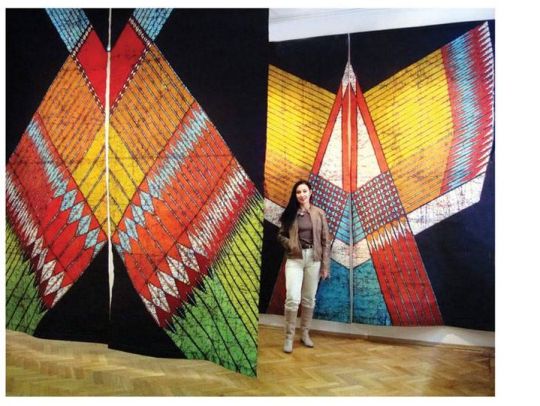
This is Poland, where the art of Indonesian batik has been practiced for over a century.
Maria Wronska-Friend, the anthropologist and museum curator at Australia’s James Cook University says that she first encountered batik in a museum in her native Poland.
The story that Wronska-Friend tells is remarkable. Polish botanists working for the Dutch in Bogor, West Java, in the late 19th century were surprised to encounter batik textiles, which they said resembled a similar wax-dyeing technique Polish people used to decorate Easter eggs. The samples of Indonesian batik that they brought back to Poland, along with a contemporary Dutch vogue for batik, triggered a creative movement. Batik, as Wronska-Friend says, quickly made the jump from eggshell to cloth in Poland.
By the 1920s, there were three how-to books about Javanese batik published in Poland. Polish artisans even started to use Javanese-style canting (wax pens), as opposed to their traditional tools. In Cracow between 1913 and 1925, there were workshops, some comprised of teenaged girls, where artisans made batik textiles adopted from patterns almost indistinguishable from those in Indonesia. STORY BY Indonesia Design December 30, 2016
Photo by Maria Wronska-Friend
13 notes
·
View notes